有轨客运缆车总体结构与减震机构设计(含CAD,SolidWorks三维图)
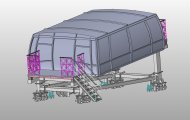
有轨客运缆车总体结构与减震机构设计(含CAD,SolidWorks三维图)(任务书,开题报告,外文翻译,论文说明书23000字,CAD图2张,SolidWorks三维图)
摘要
随着长江沿岸经济的快速发展,长江沿岸码头的客运量也随之增加。同时长江沿岸土质疏松导致缆车预先铺设好的轨道出现变形,使现有的缆车具有振动强和噪声大的缺点的得到进一步放大。本文结合上述情况对有轨客运缆车进行减震降噪设计,考虑在缆车的车厢和车架之间改用钢丝绳隔振器进行联接,来缓解缆车因轨道变形而加剧的振动和噪声,以此来提高乘客乘坐的舒适性。
本文通过引入钢丝绳隔振器对新型客运缆车外形尺寸和减振机构进行详细设计,并通过理论方法对所设计的有轨客运缆车强度进行了校核,来说明所设计的缆车的稳定性和联接螺栓强度符合设计要求,在此基础上利用SolidWorks软件对缆车进行三维建模,导入ANSYS软件对缆车车架进行有限元仿真分析,通过分析结果来说明本文设计的缆车架的强度刚度符合设计要求。本文工作如下:
首先,本文根据长江沿岸地理环境和乘客乘坐安全性、舒适性等方面的分析结果,依据设计要求,通过查阅《机械设计手册》及相关标准,对有轨客运缆车车厢、平台、水平轮等部件进行了设计。同时,为了减少因长江沿岸土质疏松而变形的轨道带来的振动,对钢丝隔振器进行了选型并确定了使用个数和布置方案。 [来源:http://Doc163.com]
其次,本文对有轨客运缆车进行强度理论校核,其中包括有轨缆车的抗倾覆性,车轮组和车架的联接螺栓、钢丝绳隔振器与车架的联接螺栓的强度校核,以满足缆车在不同工况下的稳定性。
最后,通过运用SolidWorks软件对本文所设计的有轨客运缆车进行了三维建模,并利用ANSYS软件对已建立好的缆车架模型进行了强度与刚度校核,结果表明本文设计的缆车架的强度和刚度符合设计要求。
关键词:缆车;总体设计;钢丝绳隔振器;强度校核;ANSYS
Abstract
With the rapid development of the economy along the Yangtze River, the passenger volume of the wharf along the Yangtze River also increases. At the same time the loose soil along the Yangtze River leads to the deformation of the track laid in advance which makes the existing cable car have the disadvantages of strong vibration and large noise to be further magnified. In this paper, according to the above situation, the vibration and noise reduction design of the rail passenger cable car is carried out, and the wire rope isolator is used to connect the cable car and the frame to alleviate the vibration and noise of the cable car due to the deformation of the track. In order to improve passenger ride comfort. In this paper, the shape dimension and vibration absorber of the new type passenger cable car are designed in detail by introducing the wire rope isolator, and the strength of the designed rail passenger cable car is checked by the theoretical method. To show that the stability and connection bolt strength of the designed cable car meet the design requirements, on the basis of the use of SolidWorks software for three-dimensional modeling of the cable car, the introduction of ANSYS software to the cable car frame finite element simulation analysis, The results show that the strength and stiffness of the cable car frame meet the design requirements. The work of this paper is as follows: First of all, according to the analysis results of the geography environment along the Yangtze River and passenger ride safety and comfort, according to the design requirements, through consulting the Mechanical Design Manual and related standards, the railway passenger trams, platforms, etc. The horizontal wheel and other parts are designed. At the same time, in order to reduce the vibration caused by the deformed track caused by loose soil along the Yangtze River, the steel wire isolator is selected, and the number and layout of the vibration isolator are determined. Secondly, this paper verifies the strength theory of the rail passenger cable car, including the anti-overturning property of the rail cable car, the connection bolt of the wheel group and the frame, the strength check of the connection bolt between the wire rope isolator and the frame, In order to satisfy the stability of cable car under different working conditions. Finally, the 3D modeling of the rail passenger cable car designed in this paper is carried out by using SolidWorks software, and the strength and stiffness of the established cable car frame model are checked by using ANSYS software. The results show that the strength and stiffness of the cable car frame meet the design requirements. [资料来源:Doc163.com]
Key Words:Cable car; overall design; wire rope vibration isolator; strength check ANSYS
2.4.2有轨客运缆车车厢宽度设计
基于对乘客乘坐缆车的舒适性考虑,本文将在车厢内设计60个座位,将在缆车车厢内设计为四排座椅,这种设计可以使乘客乘坐缆车的舒适性可以得到很大的提升。
本文将在上述设计要求下对缆车车厢宽度进行设计。首先需考虑乘客座位的深度,参考上表2.1中的座深得数据可以得出乘客的座位深度为45厘米。设计时需考虑乘客上下缆车和在车厢内走动等行为对缆车空间的需求,基于乘客的这一需求并结合本文所设计的车厢车门宽度,使得本文在设计时需在前两排座位之间留出4个人的肩距的距离。同时在设计时为了提高乘客乘坐的舒适性,再在后两排座位前各留出一定的腿部空间,本文在考虑到上述所有原因后得出所设计的有轨客运缆车的车厢宽度为555cm。
2.4.3有轨客运缆车车厢长度设计
本文在设计缆车车厢时,为了使乘客乘坐缆车的舒适性可以得到较大的提升,所以在缆车车厢内设计有60个座位。同时在对缆车宽度设计过程中,将缆车内座位设计为4排,基于上述设计结果可得在车厢的长度设计时每排需能乘坐下15个人。本文在设计缆车车厢时考虑到人体最宽的部位为肩部,基于这一原因在设计缆车长度时是以人体肩距为基础尺寸,乘客肩距如上表2.1所示。最后在设计时考虑到乘客乘坐的舒适性,每人座位之间都预留10cm的空间。基于上述设计可得有轨客运缆车车厢长度为795cm。
车厢具体尺寸如表2.2所示。
表2.2车厢具体尺寸
车厢尺寸位置 车厢尺寸
cm
高 240
宽 555
长 795
[资料来源:Doc163.com]
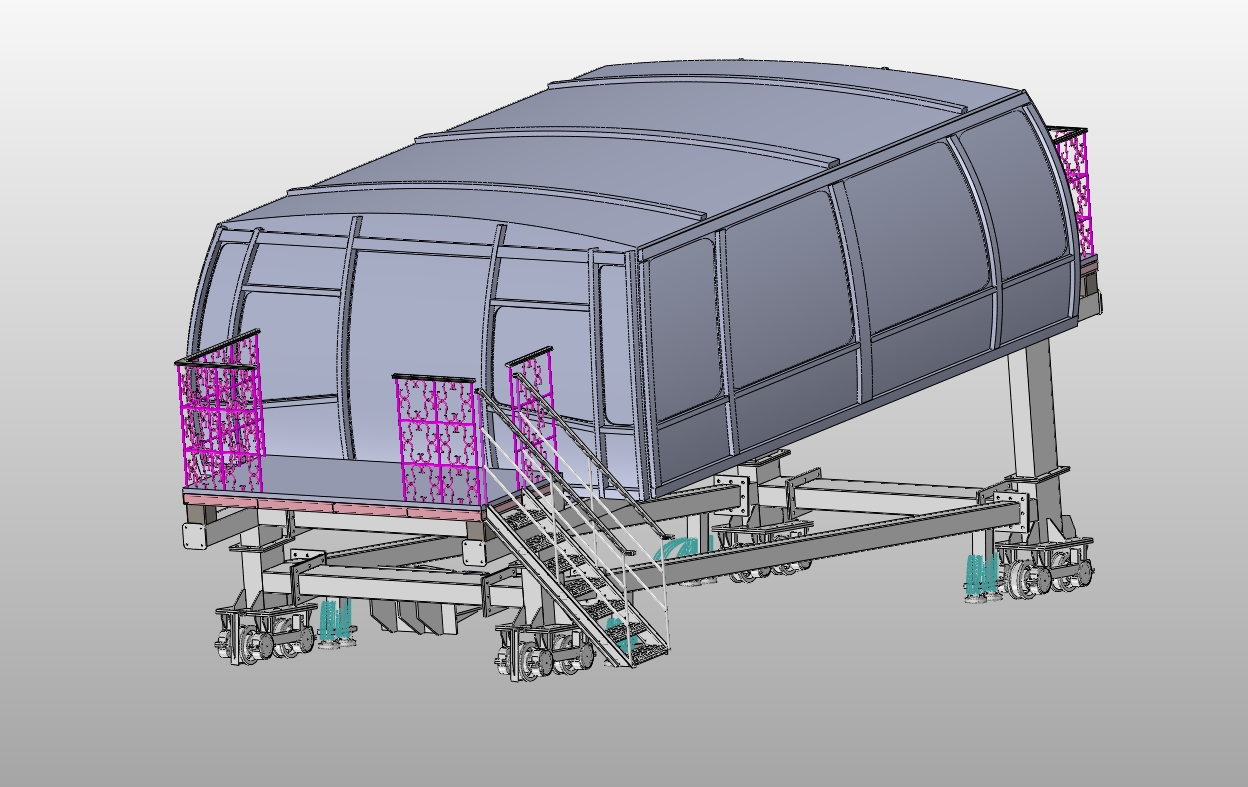
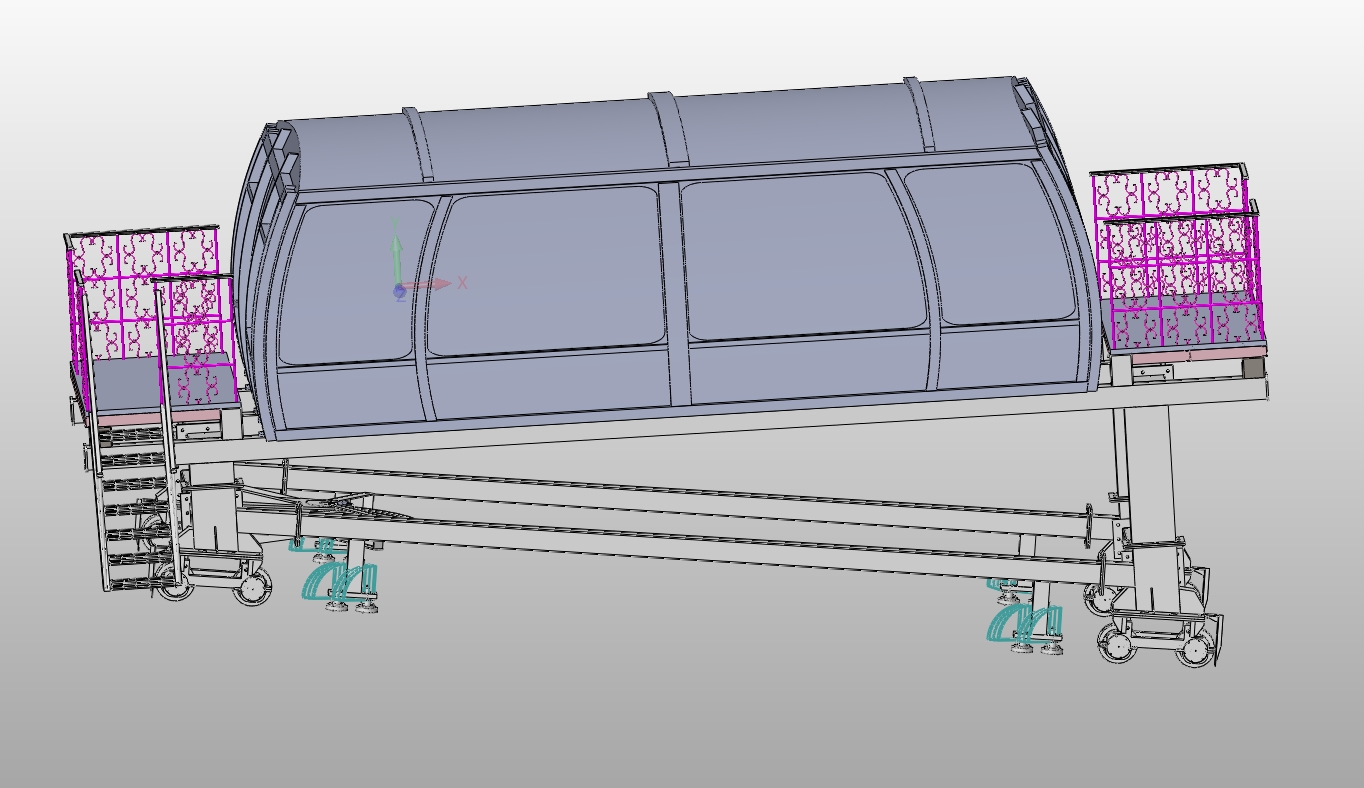
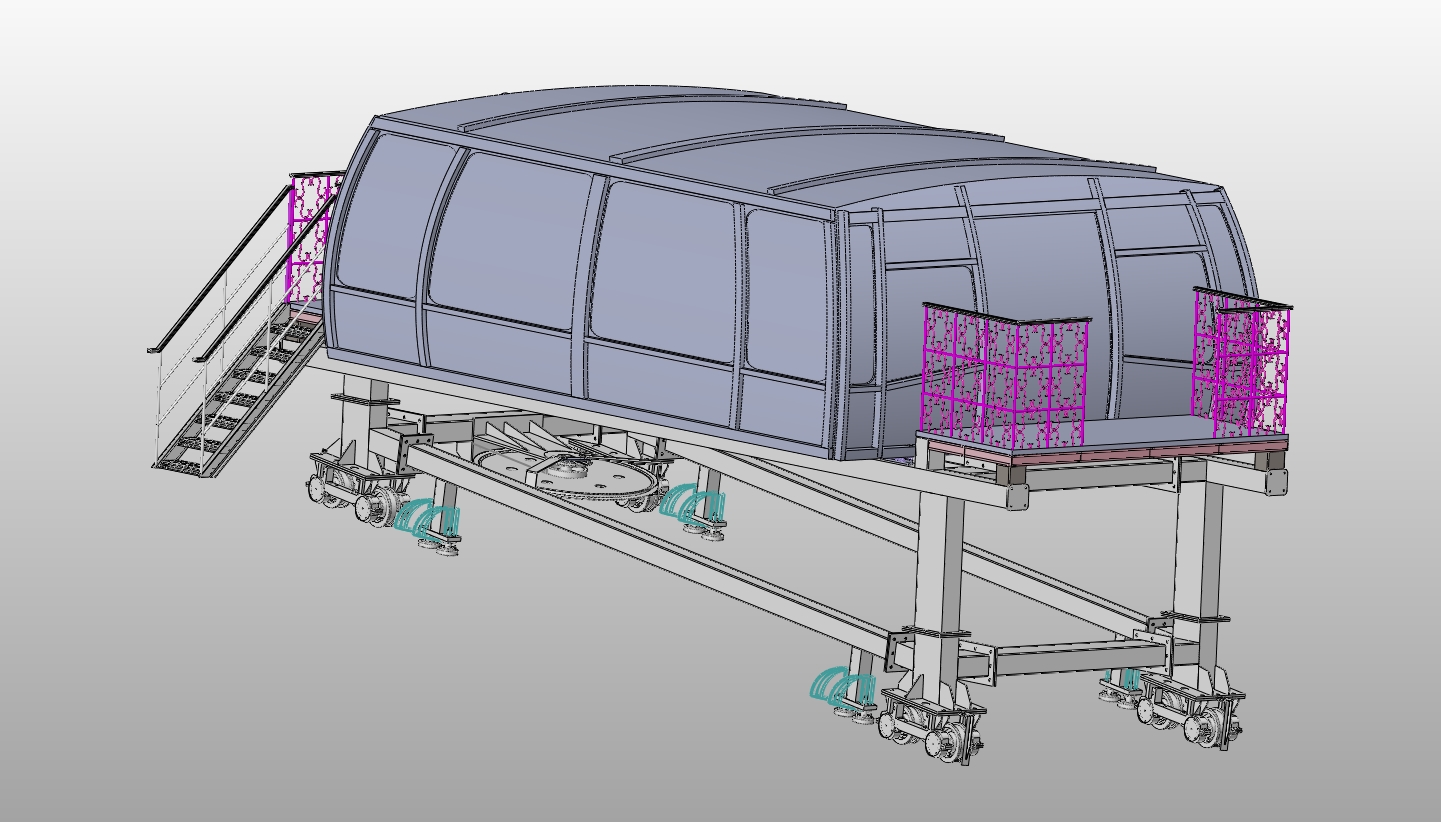
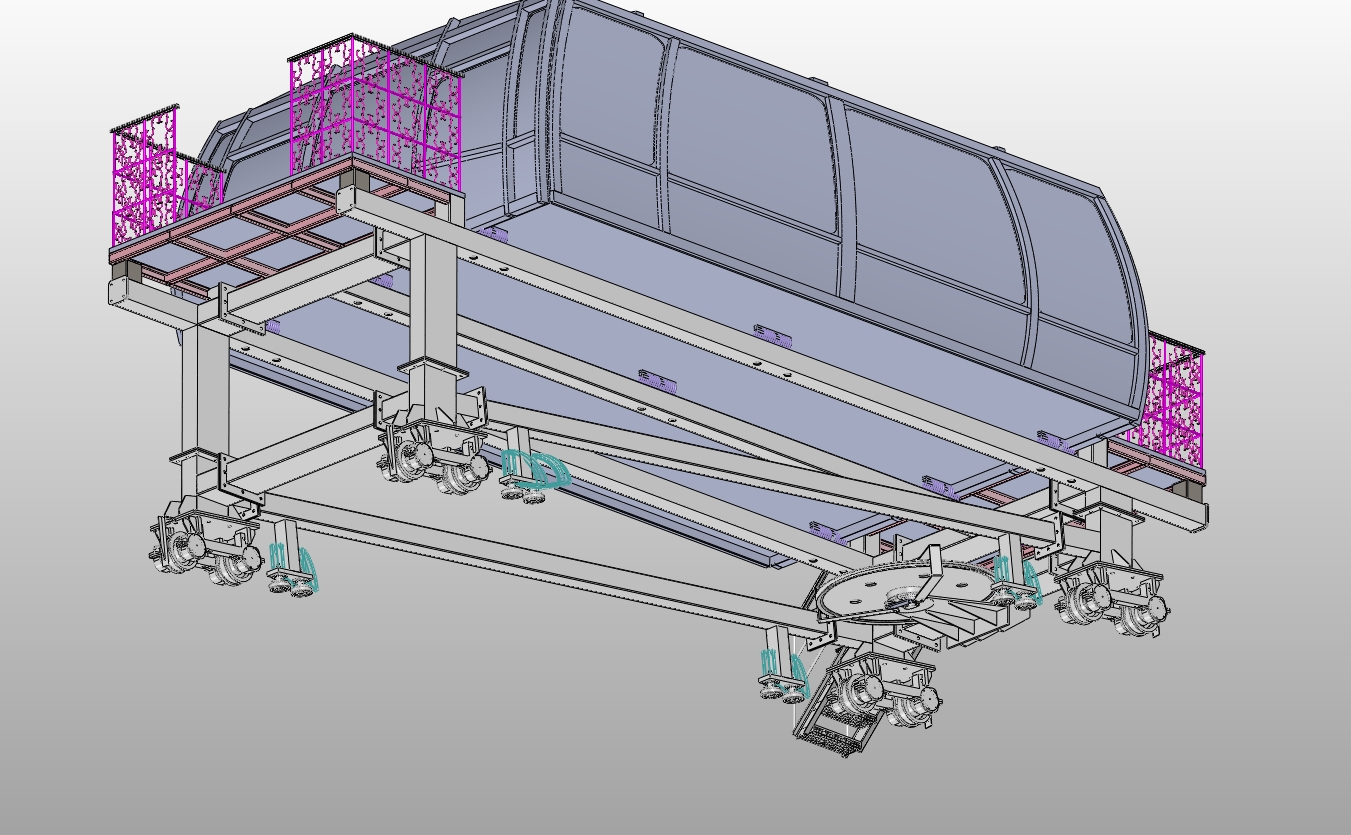

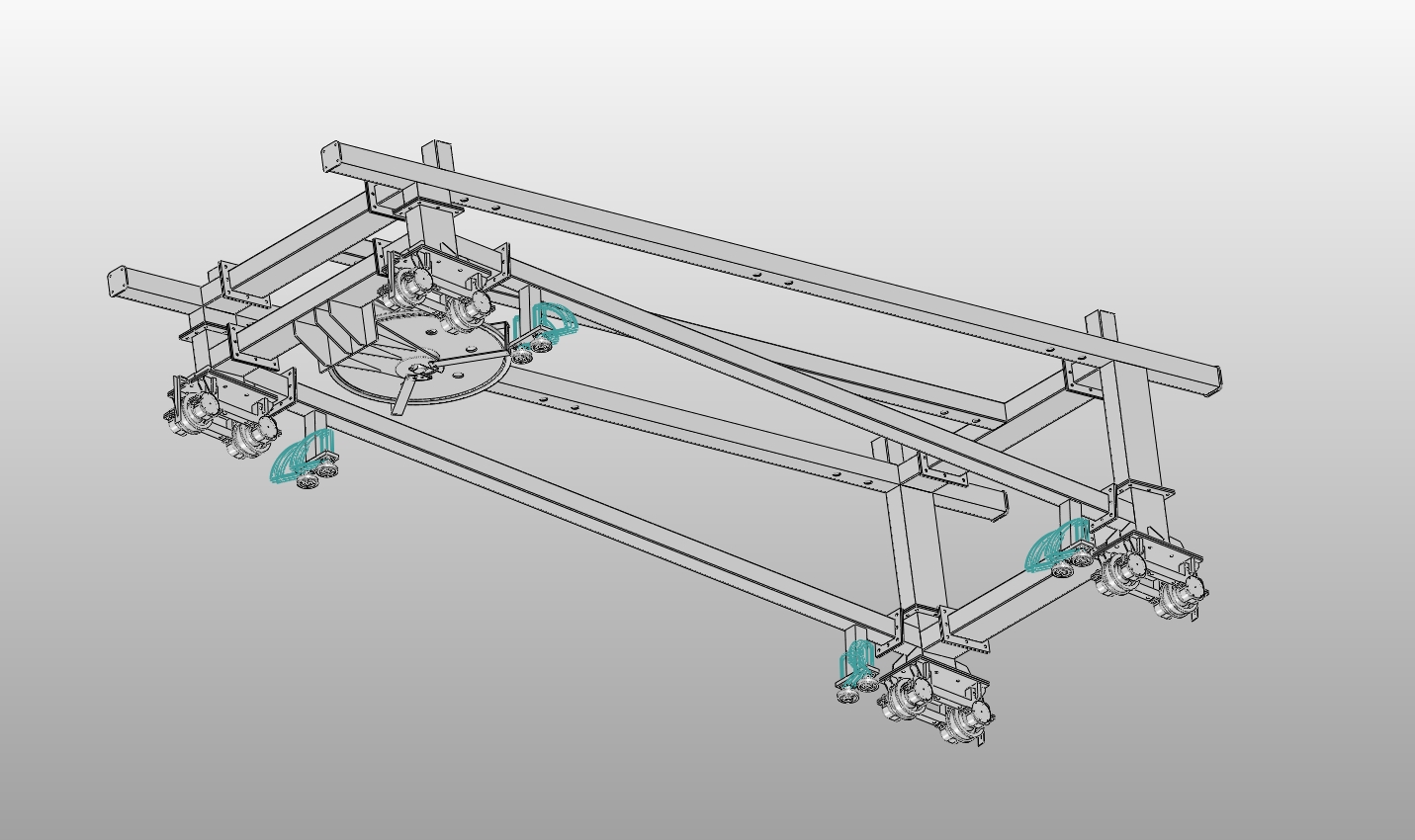
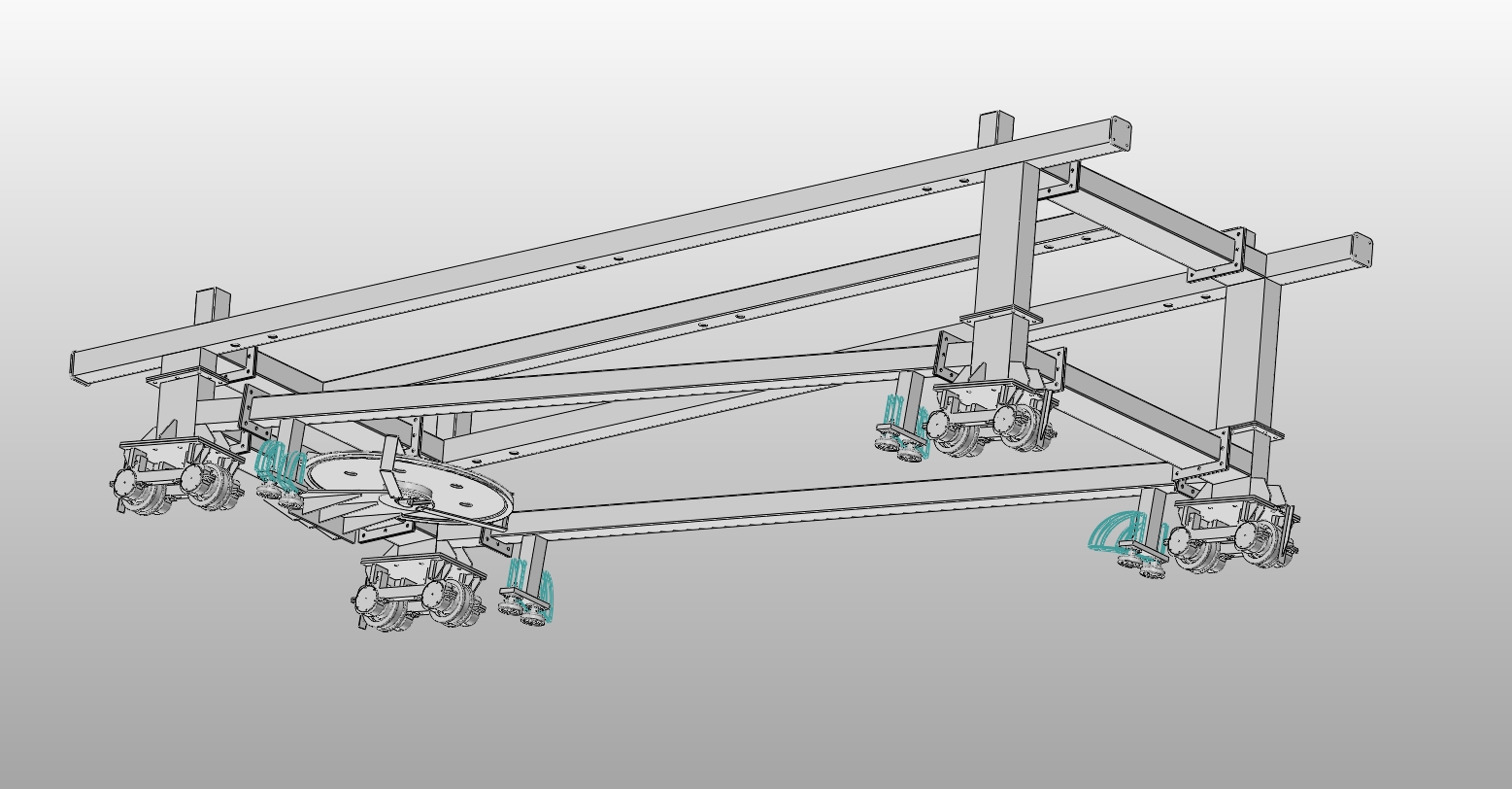
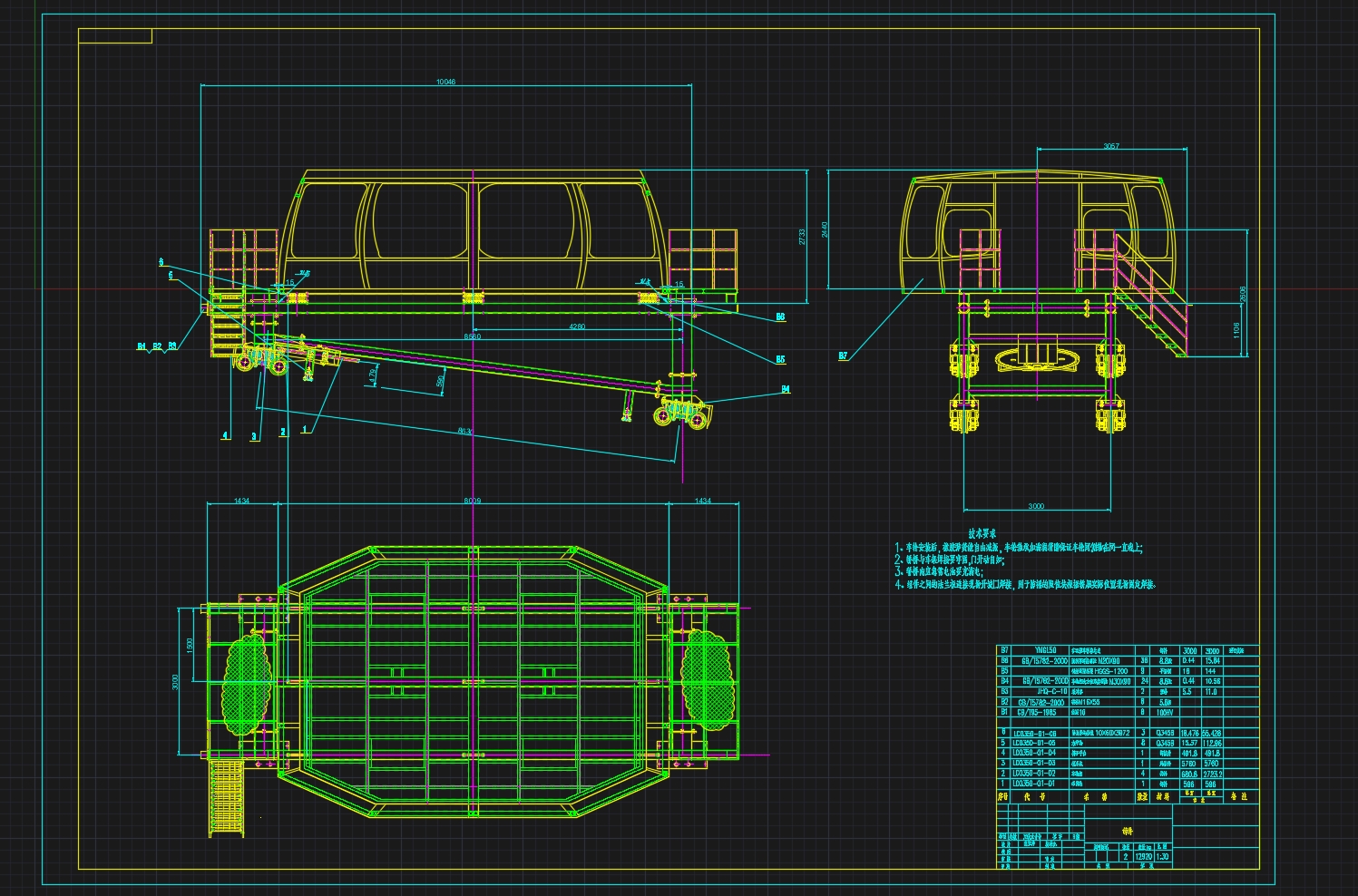
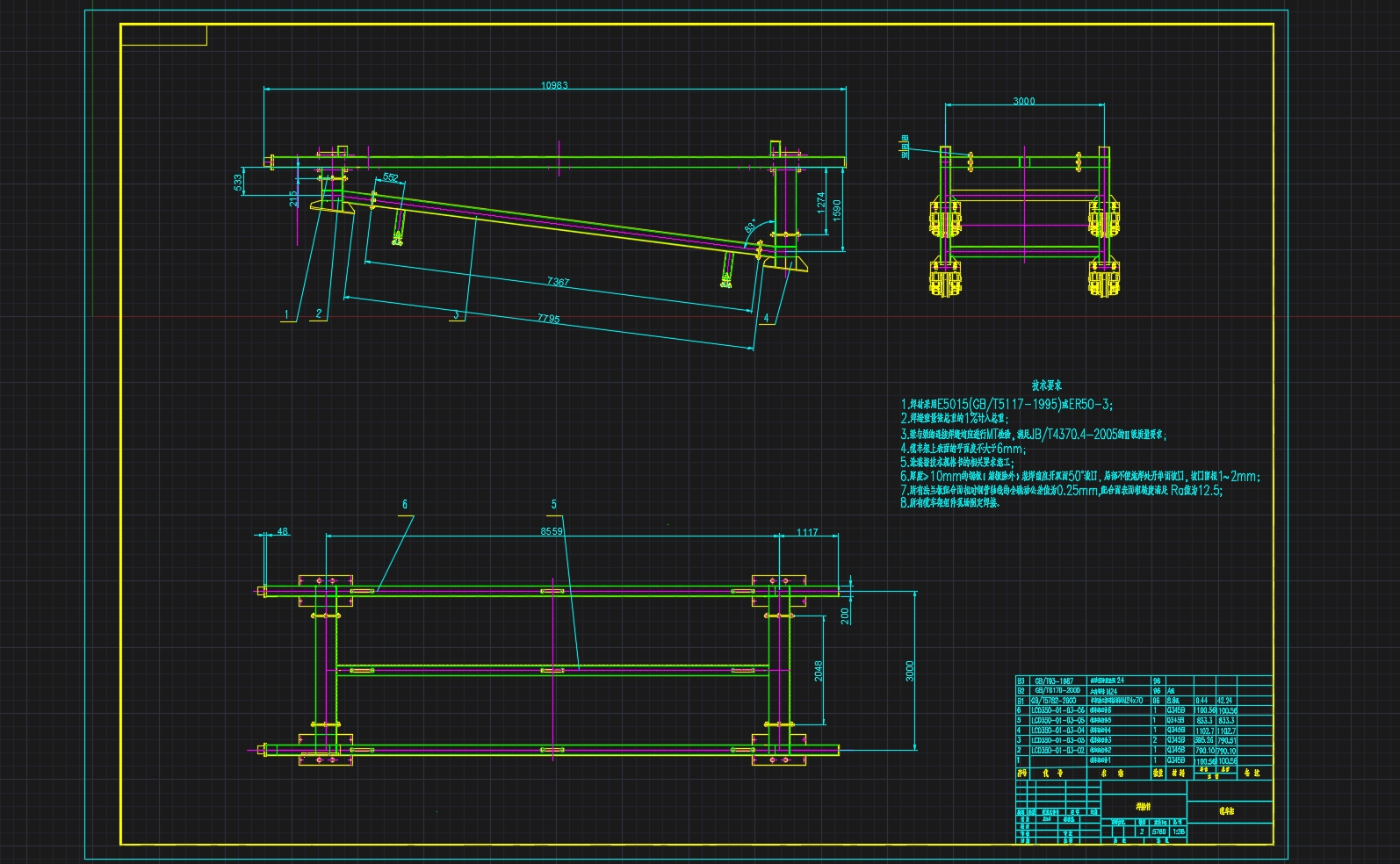
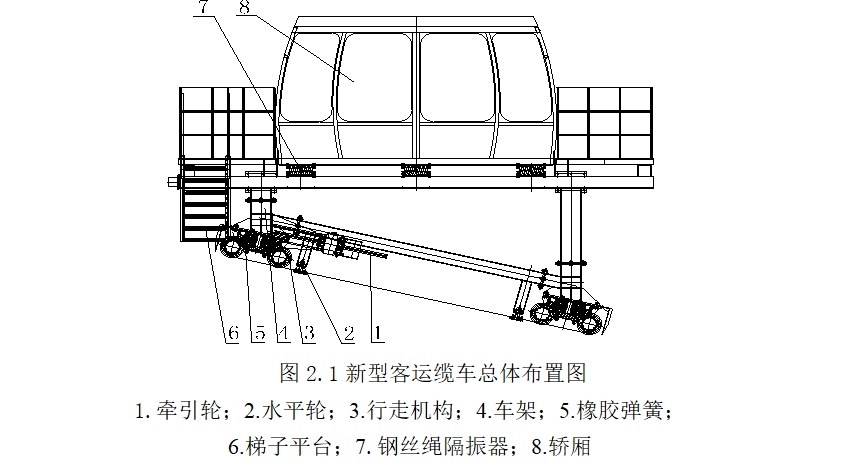
[来源:http://Doc163.com]
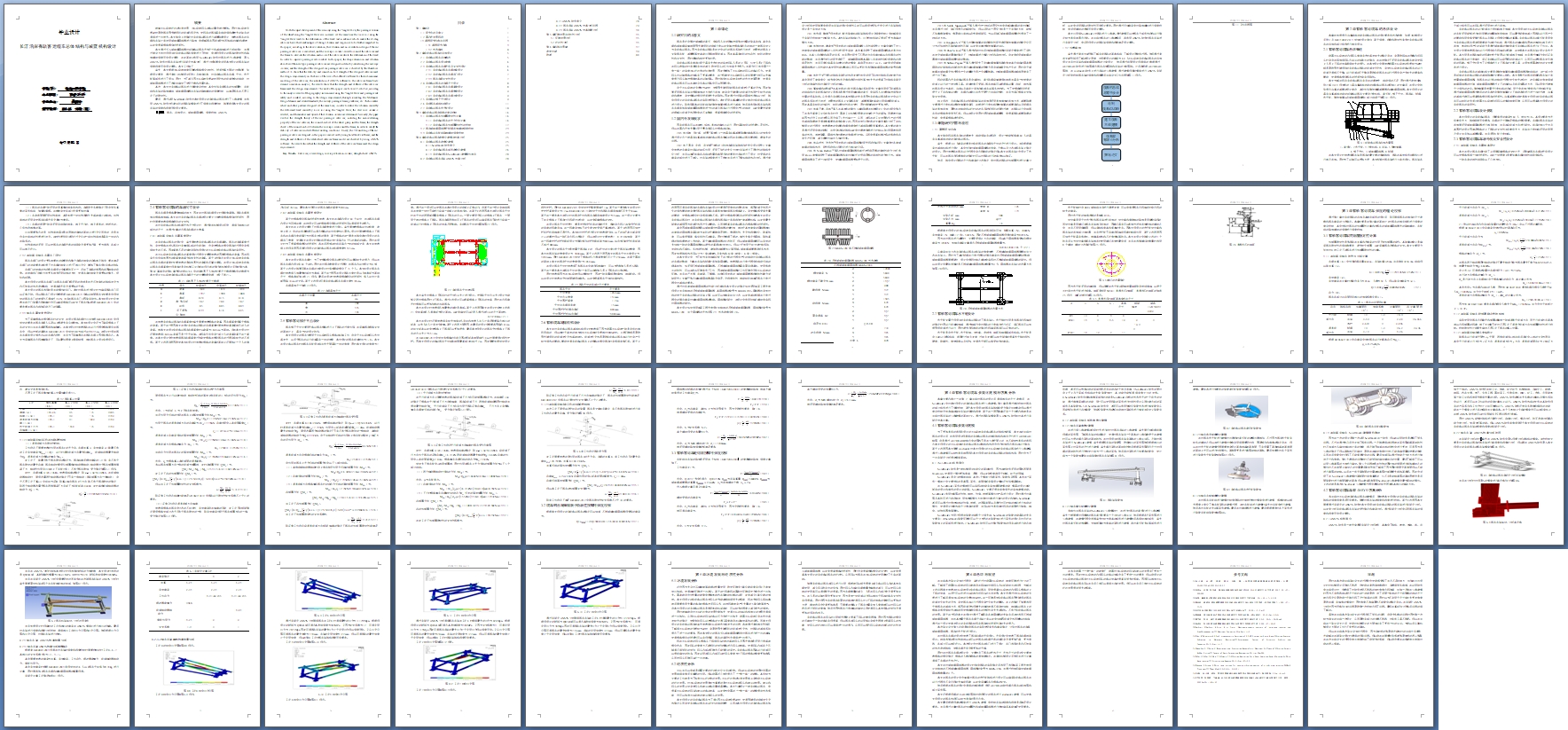

目录
第1章绪论 1
1.1 研究目的及意义 1
1.2 国内外发展现状 1
1.3课题研究内容与流程 3
1.3.1课题研究内容 3
1.3.2 技术路线 4
第2章有轨客运缆车的总体设计 5
2.1 有轨客运缆车总体概述 5
2.2 有轨客运缆车设计参数 6
2.3 有轨客运缆车车厢外观及安全性设计 6
2.3.1 有轨客运缆车车厢线条设计 6
[版权所有:http://DOC163.com]
2.3.2 有轨客运缆车车厢车门设计 7
2.3.3 缆车车厢安全性设计 7
2.4 有轨客运缆车的车厢尺寸设计 8
2.4.1 有轨客运缆车车厢高度设计 8
2.4.2 有轨客运缆车车厢宽度设计 9
2.4.3 有轨客运缆车车厢长度设计 9
2.5 有轨客运梯子平台设计 9
2.6 有轨缆车减振机构设计 11
2.7 有轨客运缆车水平轮设计 14
第3章有轨客运缆车强度的理论校核 16
3.1 有轨客运缆车抗倾覆稳定性计算 16
3.1.1 有轨客运缆车的外力力矩计算 16
3.1.2 有轨客运缆车抗倾覆稳定性的校核 17
3.2 缆车钢丝绳隔振器于轿厢连接螺栓强度校核 23
3.3 有轨客运车轮组联接螺栓强度校核 23
第4章有轨客运缆车参数化建模与仿真分析 25
4.1 有轨客运缆车参数化建模 25
4.1.1 SolidWorks软件简介 25 [来源:http://www.doc163.com]
4.1.2 有轨客运缆车部件参数化建模 26
4.1.3 有轨客运缆车SolidWorks建模操作难点 28
4.2 有轨客运缆车车架ANSYS仿真分析 28
4.2.1 ANSYS软件简介 28
4.2.2 缆车车架ANSYS仿真分析流程 29
4.2.3 缆车车架ANSYS仿真结果分析 30
第5章环境发展与经济性分析 35
5.1环境发展分析 35
5.2经济性分析 35
第6章总结与展望 37
参考文献 39
致谢 40 [资料来源:http://Doc163.com]
上一篇:轴流式磁悬浮血泵的结构设计与分析(含CAD零件装配图)
